Table of Contents
Data archiving is an important part of effective data management. A clear separation between active and passive data improves clarity and optimizes access for users.
With our software, migRaven.24/7 data retention, we rely on symlinks to make this separation efficient. Symlinks allow files that exceed a certain age limit to be automatically moved to archive destinations without affecting user access. In addition, compared to stub files, symlinks allow the active directory tree to be cleaned up, which significantly increases user efficiency.
Using symlinks
In the context of migRaven.24/7 data retention We use symlinks to make the operational directory tree clearer and thereby significantly increase efficiency for users.
What are symlinks and how do they work?
Symlinks, also known as symbolic links or soft links, are shortcuts that point to a physical folder in an archive destination. They appear as virtual folders (1) in Windows Explorer and make navigation much easier.
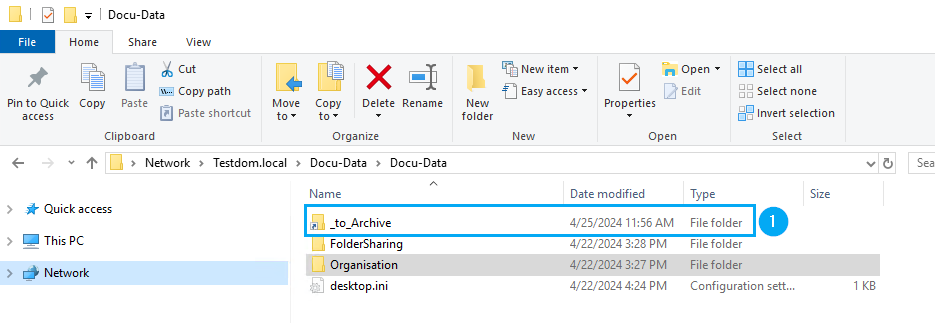
In the context of migRaven.24/7 data retention Symlinks play a central role in separating active and passive data on different resources. Our software currently supports Windows and EMC shares as on-premises archive targets.
To minimize future customization effort, we strongly recommend symlinking the archive target as a UNC path using its own DFS namespace. This way, even if the archive destination changes, the symlink remains unchanged. Instead, the target address in the DFS namespace is simply updated. This eliminates the need to manually adjust the symlinks, saving you considerable effort.
For a successful application, the symlinks must be automatically from migRaven be generated. In this case, selected files that exceed a predefined age restriction are moved from the production system to the defined archive target. All other data remains in their original directories on the original drive. For more information about defining the target directories, see https://help.migraven.com/datenaufbewahrung/.
What are the exceptions for Netapp?
The use of the migRaven.24/7 data retention with Netapp must be with that migRaven Support to be coordinated.
See our help article for the minimum requirements for your NetApp Creation of symlinks on the NetApp.
Due to Windows security requirements, your domain requires permissions to create and use symlinks Resource Scan Service Account and the client PCs are granted. To do this, please set up the Group Policy Objects (GPO) below and apply them accordingly.
GPO 1: What is necessary so that migRaven can generate symlinks?
With the first GPO we will Resource Scan Service Account authorize you to create symlinks on the servers to be archived. Since it is difficult to determine specifically which servers this will affect, we recommend applying the GPO to the domain.
Open Group Policy Management on your domain controller (2), right-click on your domain (3) and create a new Group Policy object there (4).
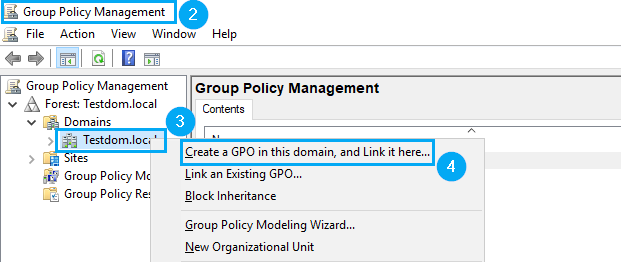
Name the group policy (5).

Navigate to the Group Policy Objects (6), right-click on the GPO Symlink Creation (7) and select edit (8).

Navigate through points 9 – 14 and select the policy Creating symbolic links (15), add yours Resource Scan Service Account (17) (16) and save your entry (18).
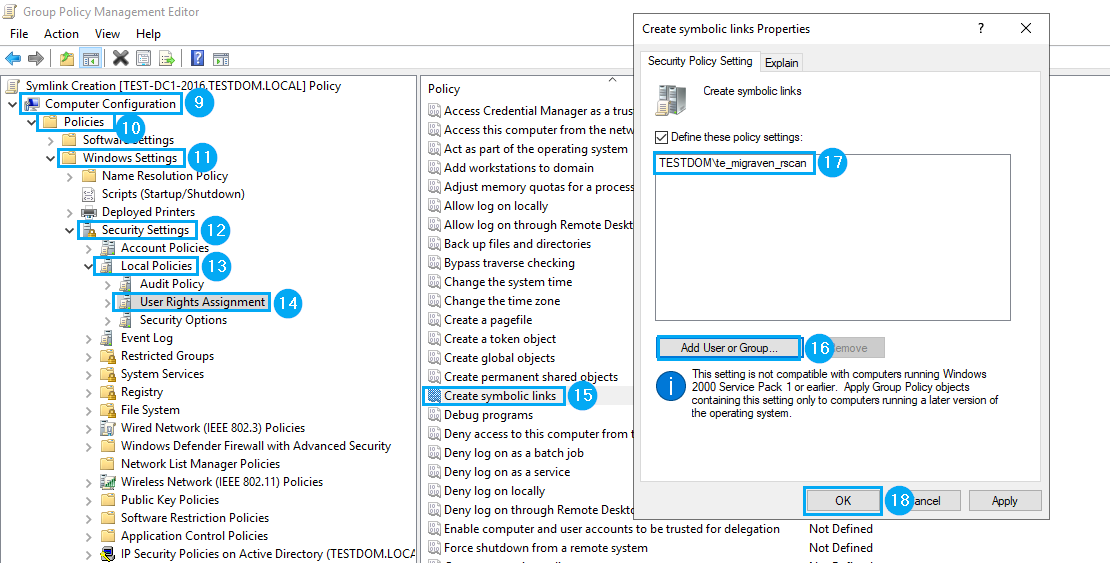
Close the Group Policy Management Editor.
GPO 2: What is necessary for users to be able to use the symlink?
In order for users to be able to use symlinks, it is necessary to prepare user PCs and, if necessary, servers so that the symlinks can be used from there. Since you can probably never say exactly from where symlinks have to be used, we recommend applying this GPO to the domain as well.
Please right-click on your domain (19) again and create another group policy (20).
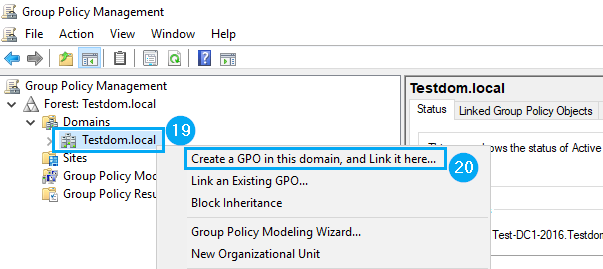
Also name this GPO (21).
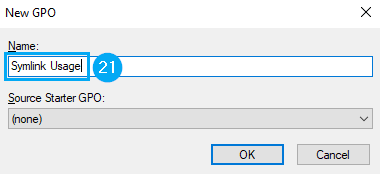
Go to the Group Policy Objects (22) again, right-click on the GPO Symlink Usage (23) and go to Edit (24).
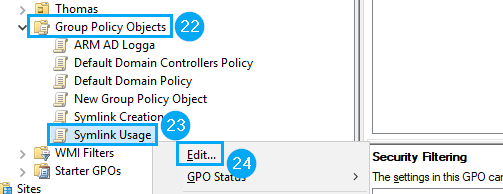
When editing the GPO, navigate through points 25 – 29 and open the point Allow symbolic links to be evaluated selectively (30). Activate the selection menu (31), select the three points below (32) and save the settings. Close the Group Policy Management Editor and also the Group Policy Management.
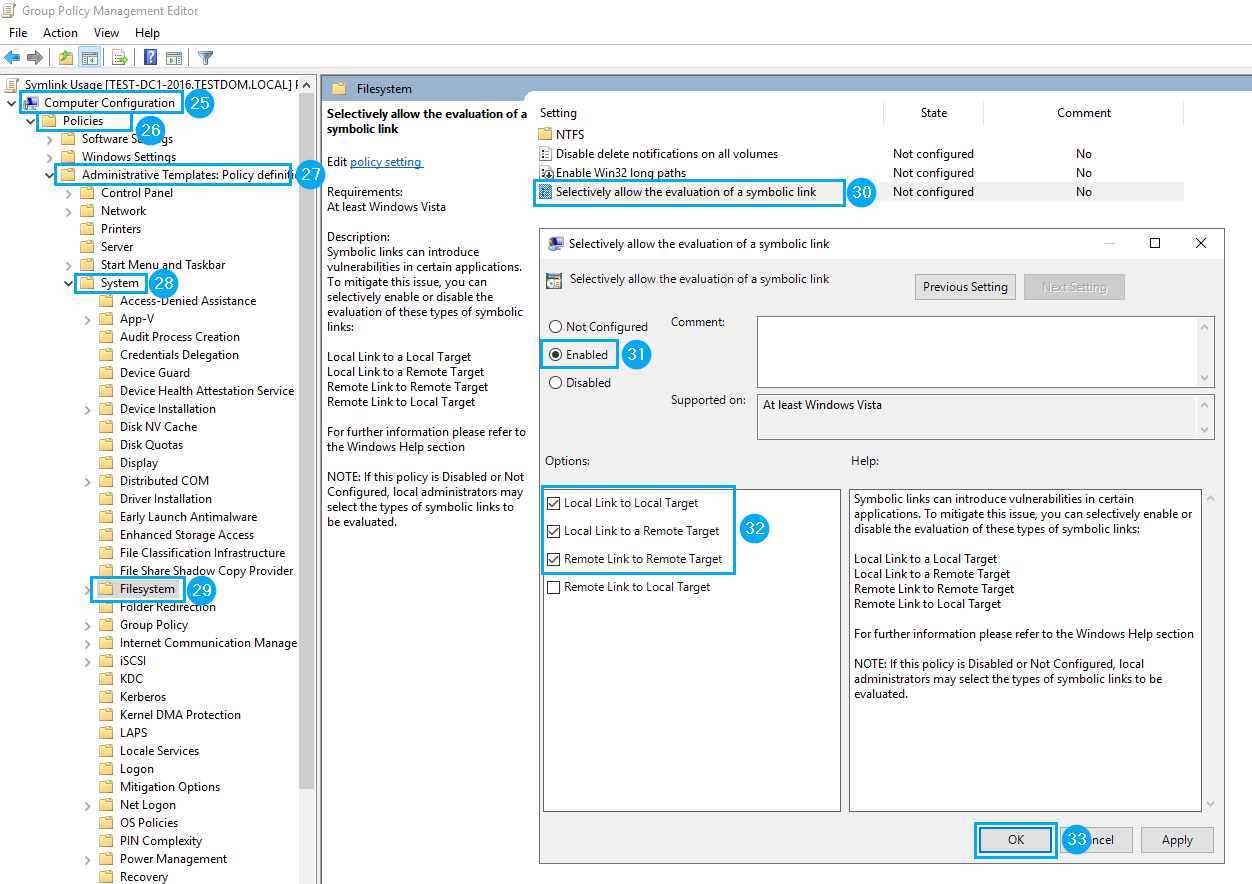
If you wanted to use the GPO more selectively, it may also be conceivable to apply it specifically to a file server OU and a user PC OU, for example.
Evaluating symlinks:
To find out whether all the necessary connection options for using the symlinks are activated, run the command line below on the command line, CMD, on the user's PC in question.
fsutil behavior query SymlinkEvaluation
Normally, the "remote to remote" option is deactivated and must be activated.
Manual activation of the remote to remote option
To manually activate the “remote to remote” option, run the command line below on the respective user PC.
fsutil behavior set SymlinkEvaluation R2R:1This will give you the result shown in the screenshot above as it should be.

